| Cataloging Practices Manual | [CPM-807] |
|---|
PROCEDURE
This document describes barcode placement for printed materials only; for barcoding mixed media, consult CPM-679 for campus locations and CPM-178 for Offsite locations. Consult CPM-808 for non-print materials.
The normal position for attaching the barcode in books is:
For example, like this:
Campus Locations Hardcover or Paperback: |
|
Left-to-right script (for example, English): |
Right-to-left script (for example, Arabic): |
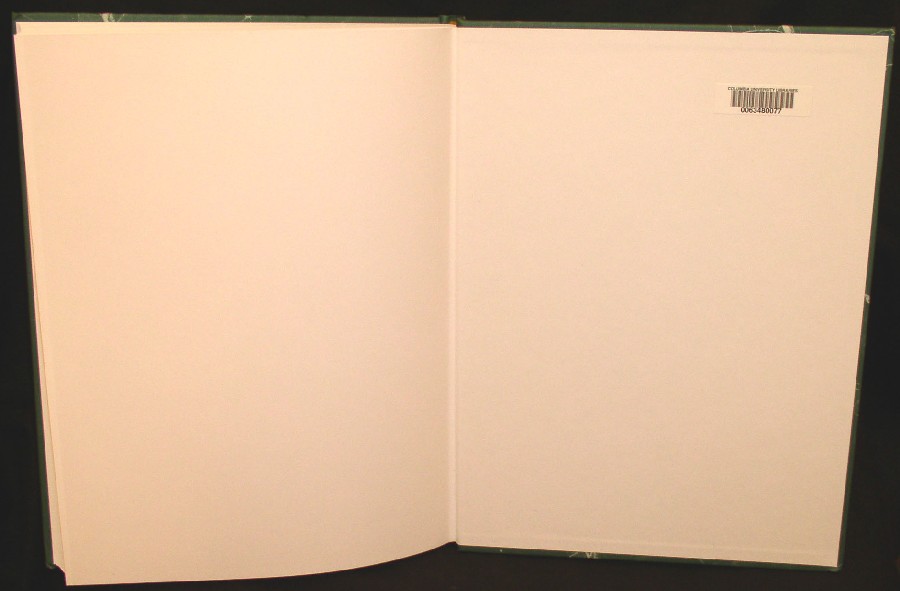 |
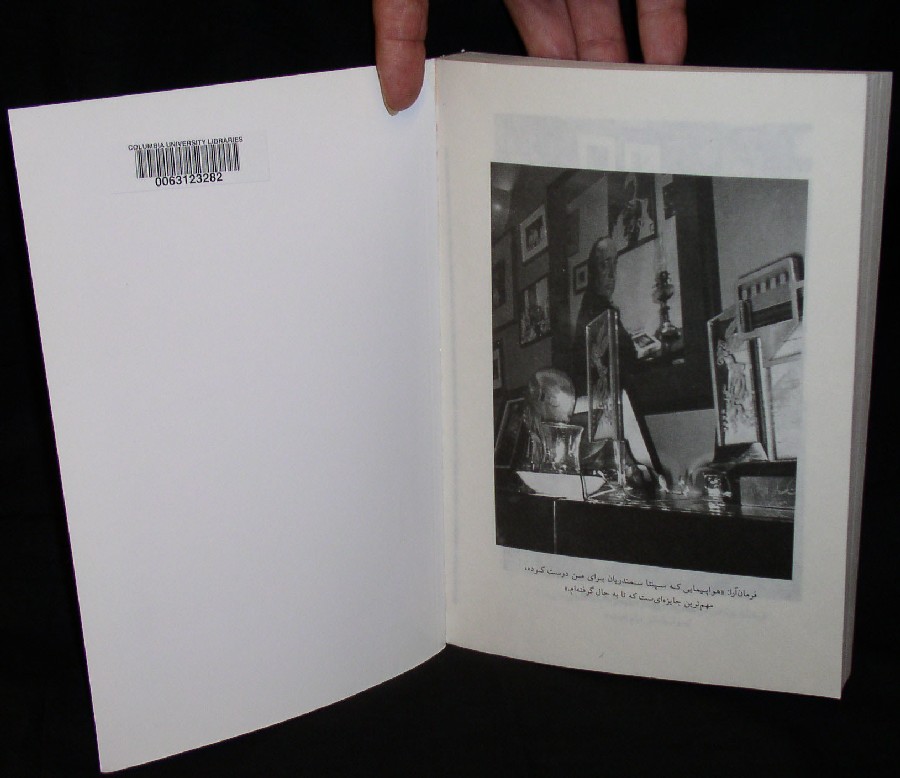 |
The barcode should not be placed on top of:
(Note: If front and back endpapers contain identical information or illustrations, the barcode may be placed on the back inside cover as usual)
The barcode should not be placed under or inside:
If the barcode cannot be placed in the normal position, select an alternative location in the following order of preference:
If none of these locations are suitable, consult supervisor.
For example:
Like this: |
Not like this: |
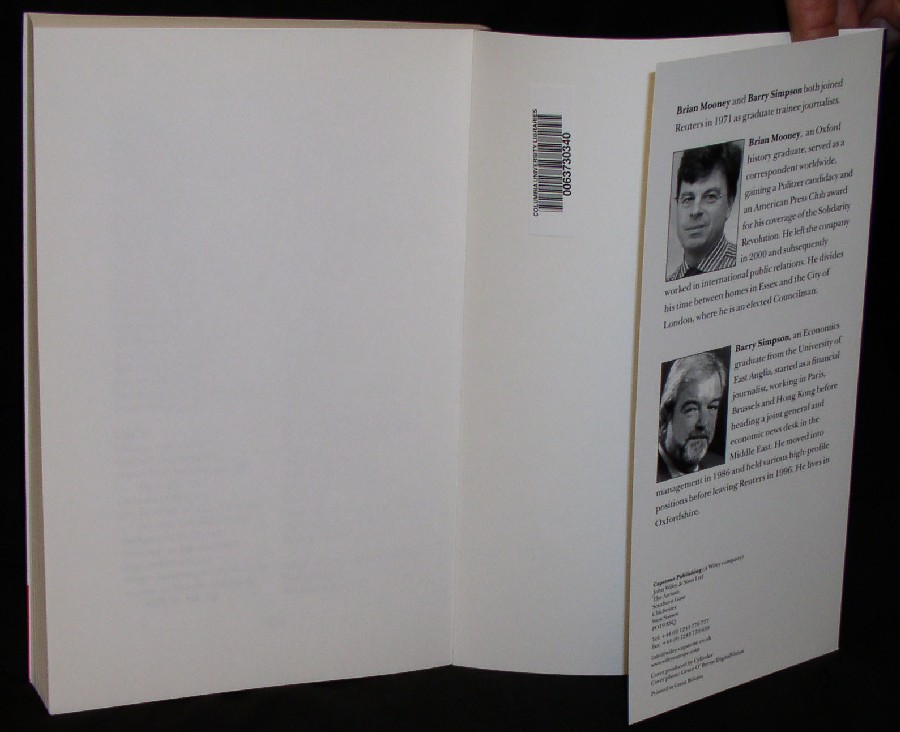 |
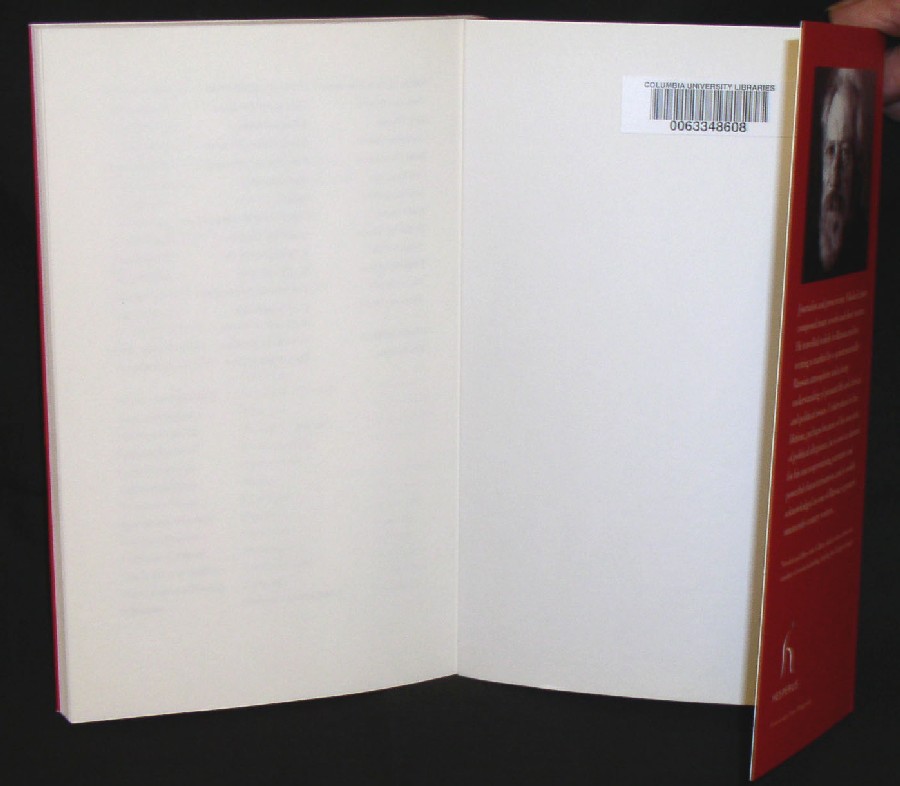 |
In the image on the left, the barcode
is correctly moved more to the center due to the flap. On the right, the
barcode was incorrectly placed under the flap.
|
|
Like this: |
Not like this: |
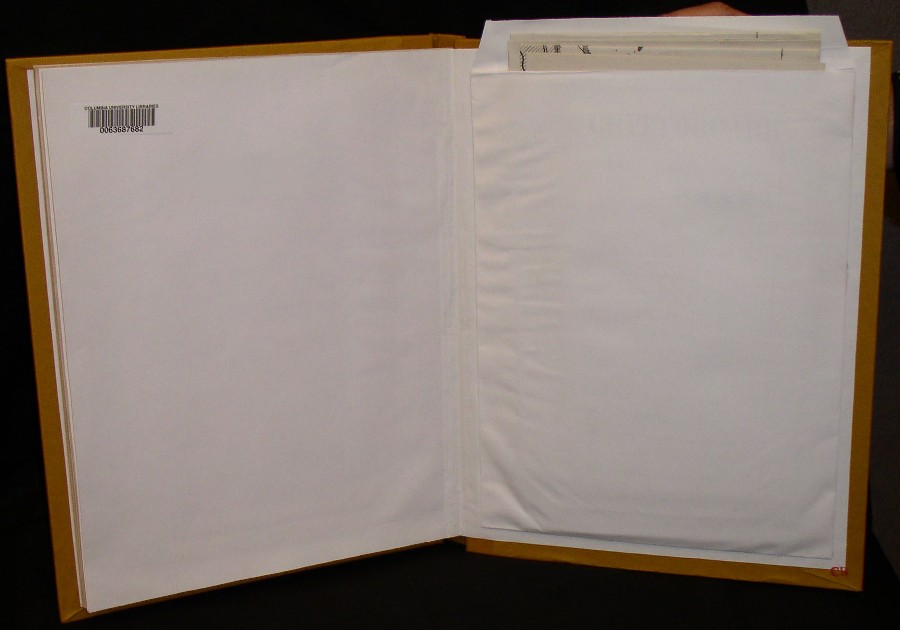 |
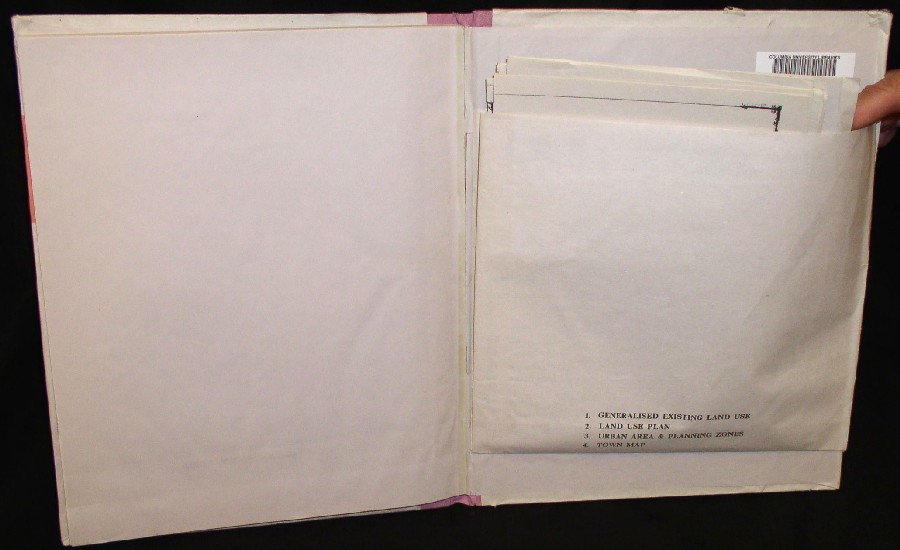 |
In the image on the left, the barcode
is correctly moved to the facing endsheet. On the right, the barcode was
incorrectly placed under the maps in the pocket.
|
|
Like this: |
Not like this: |
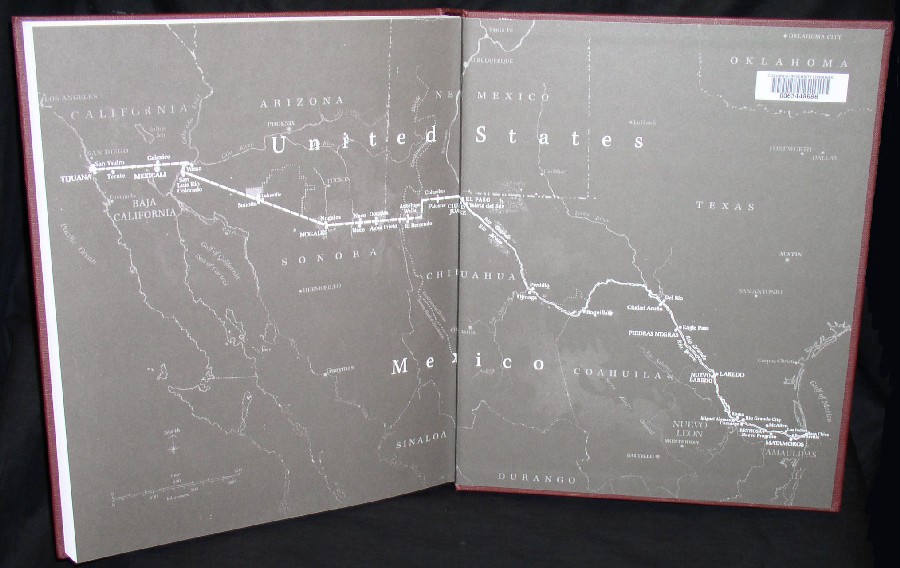 |
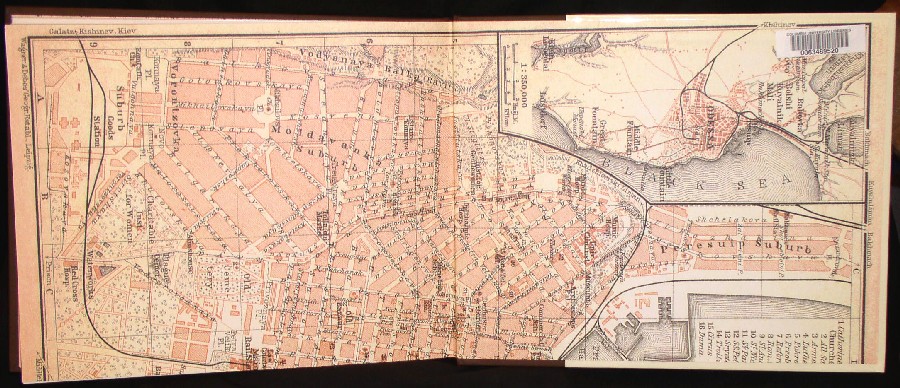 |
In the image on the left, the barcode
is correctly positioned so as not to cover text or illustration. On the
right, the barcode was incorrectly placed covering part of the map.
|
|
Note: When a paperback in non-Roman script at the East Asian Library (location eax) is left unbound on initial cataloging, follow the instruction above. On the other hand, when a paperback in non-Roman script at East Asian Library (location eax) is to be bound upon initial cataloging, place a double-back barcode on the leaf immediately preceding the back cover. For example:
Like this: |
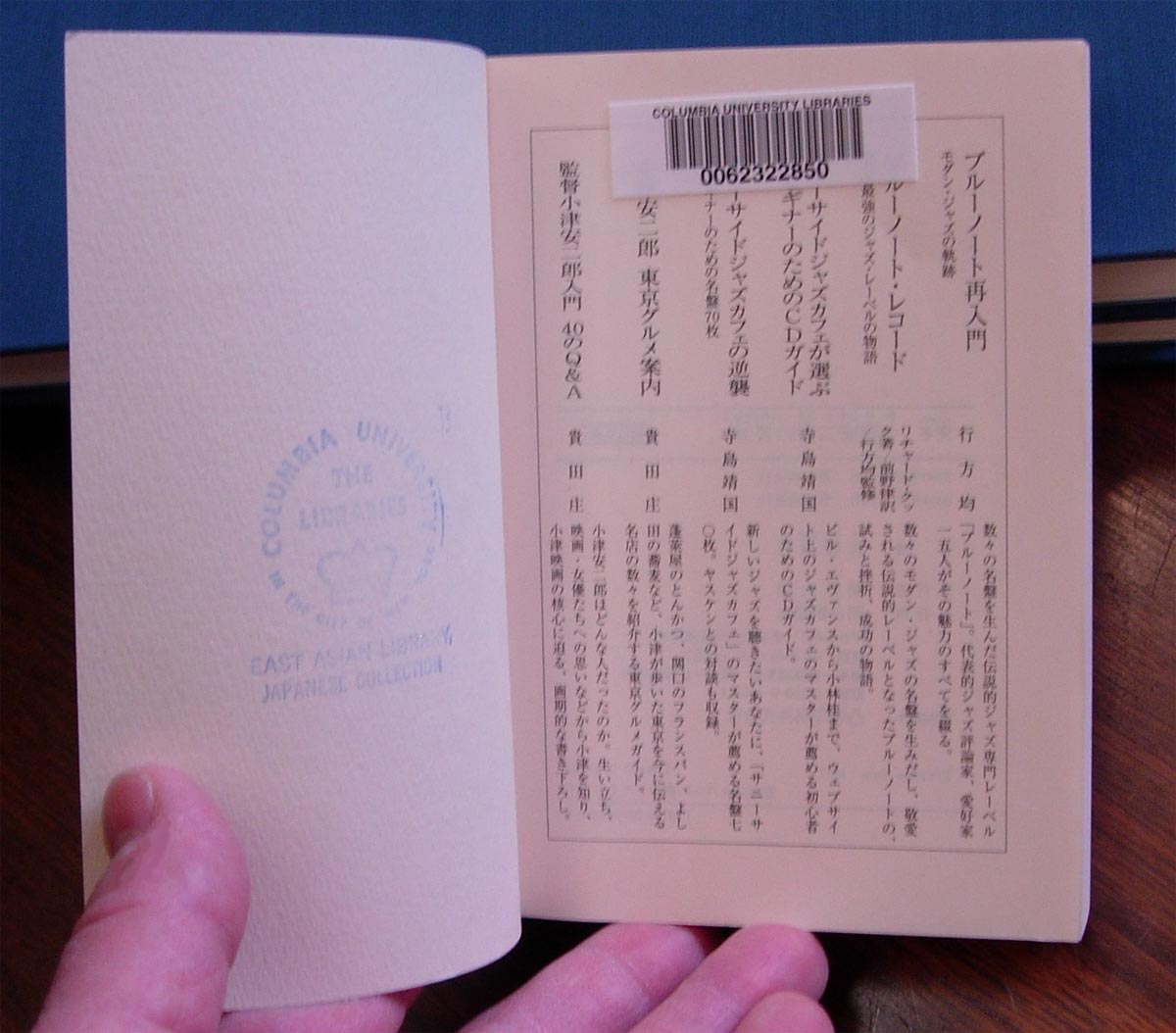 |
Books in preservation boxes need duplicate barcodes. The original barcode (i.e., the barcode that reads "Columbia University Libraries" at the top) is attached to the book as instructed above in section A ("Campus Locations: normal position"), and the duplicate barcode (i.e., the barcode that reads "Duplicate" at the top) is attached to the upper left-hand corner of the inside front flap, approximately 1 inch from the top and 1 inch from the left edge. (Note that, in addition to the usual place on the title page verso, the call number should also be written on the inside front flap of the box to reduce potentially harmful excessive handling of the book in the Binding and Shelf Processing Unit [BSP] when it is being labeled.) For example:
Like this: |
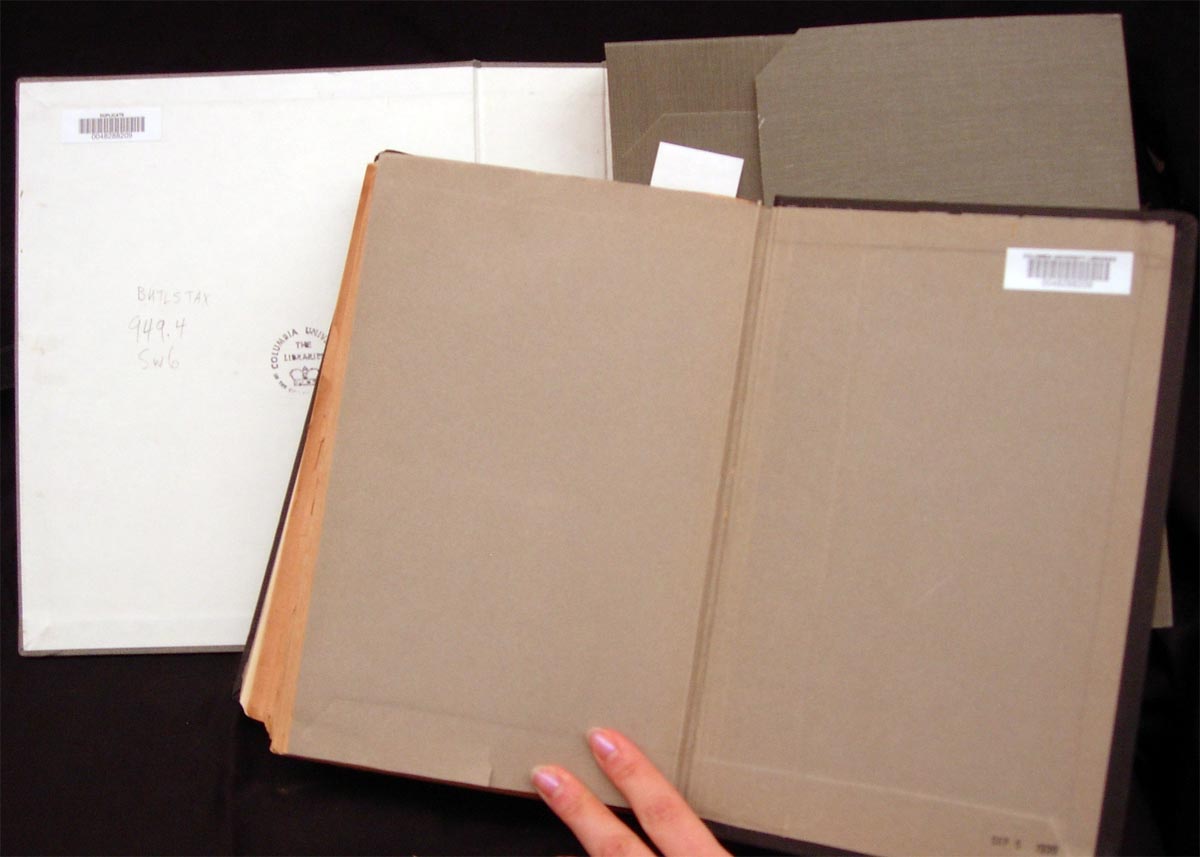 |
Offsite barcodes differ from other CUL barcodes in that the barcode number is preceded by a two-letter prefix. See CPM-424 for more info.
Offsite barcodes for general Columbia materials are preceded by the letters CU and they read "Columbia Libraries Offsite". Offsite barcodes for Music and Avery/Fine Arts are preceded by letters MR and AR respectively, have a colored stripe across the barcode, and text identifying them as having restricted access.
Offsite barcodes come either on long sheets or on rolls. The barcodes on rolls are referred to as "double-back or "piggyback barcodes." These barcodes all have prefix CU9. Offsite barcodes on long sheets have one of the many active prefixes.
"Double-back Offsite barcodes" are always placed on the inside back cover of books that will be bound at the time of cataloging. Their placement should follow the instructions described at point A above.
The Offsite barcodes on long sheets are used for books that will not be bound at the time of cataloging. They should be affixed on the front cover of the book in the upper left-hand corner of the cover to the right of the spine and 1/4 inch from top edge and spine, as the book stands on the shelf. The barcode must be put in this exact position, even if it covers text or illustrations (including right-to-left scripts and CJK vernacular.)
For example, the following illustrate correct placement for books that will not be bound at the time of cataloging:
Hardcover: |
Paperback not to be bound: |
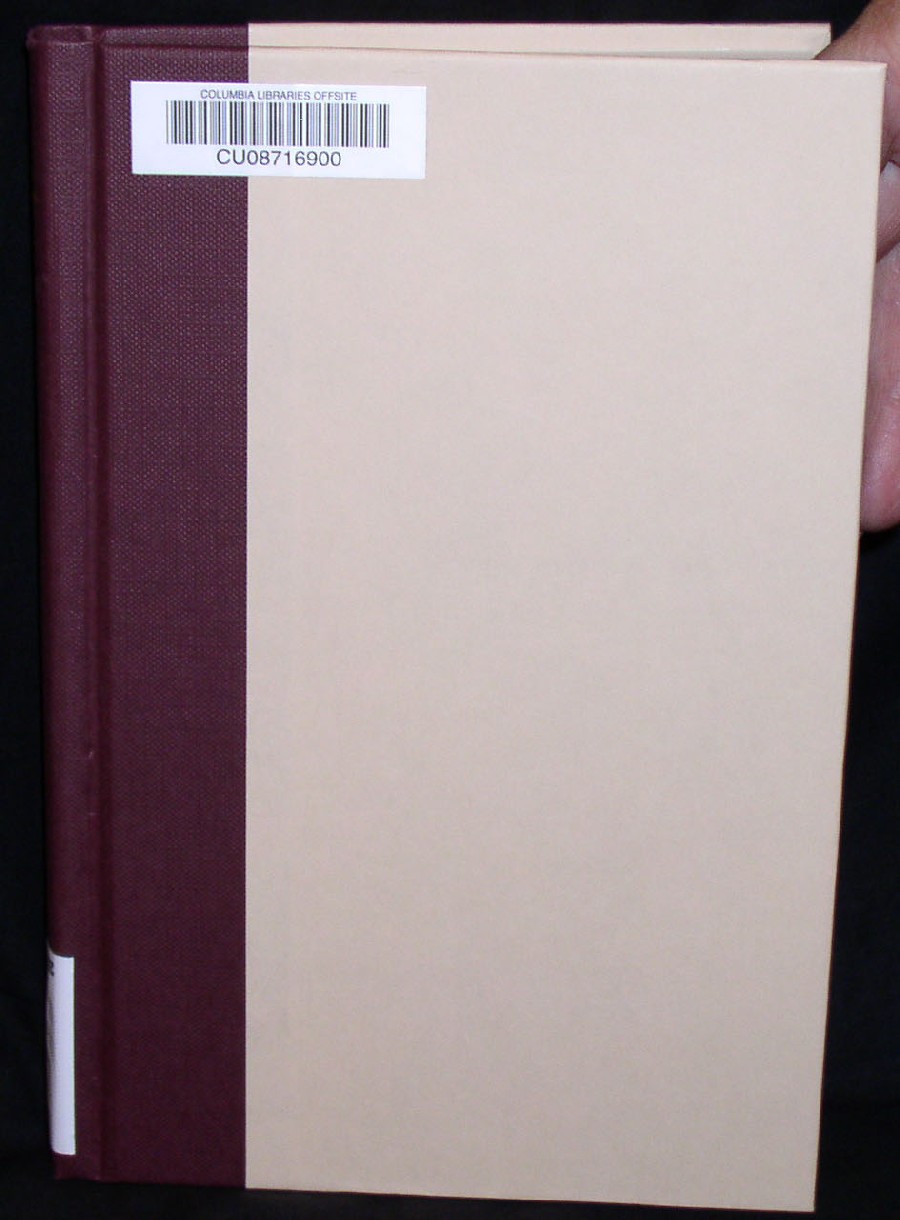 |
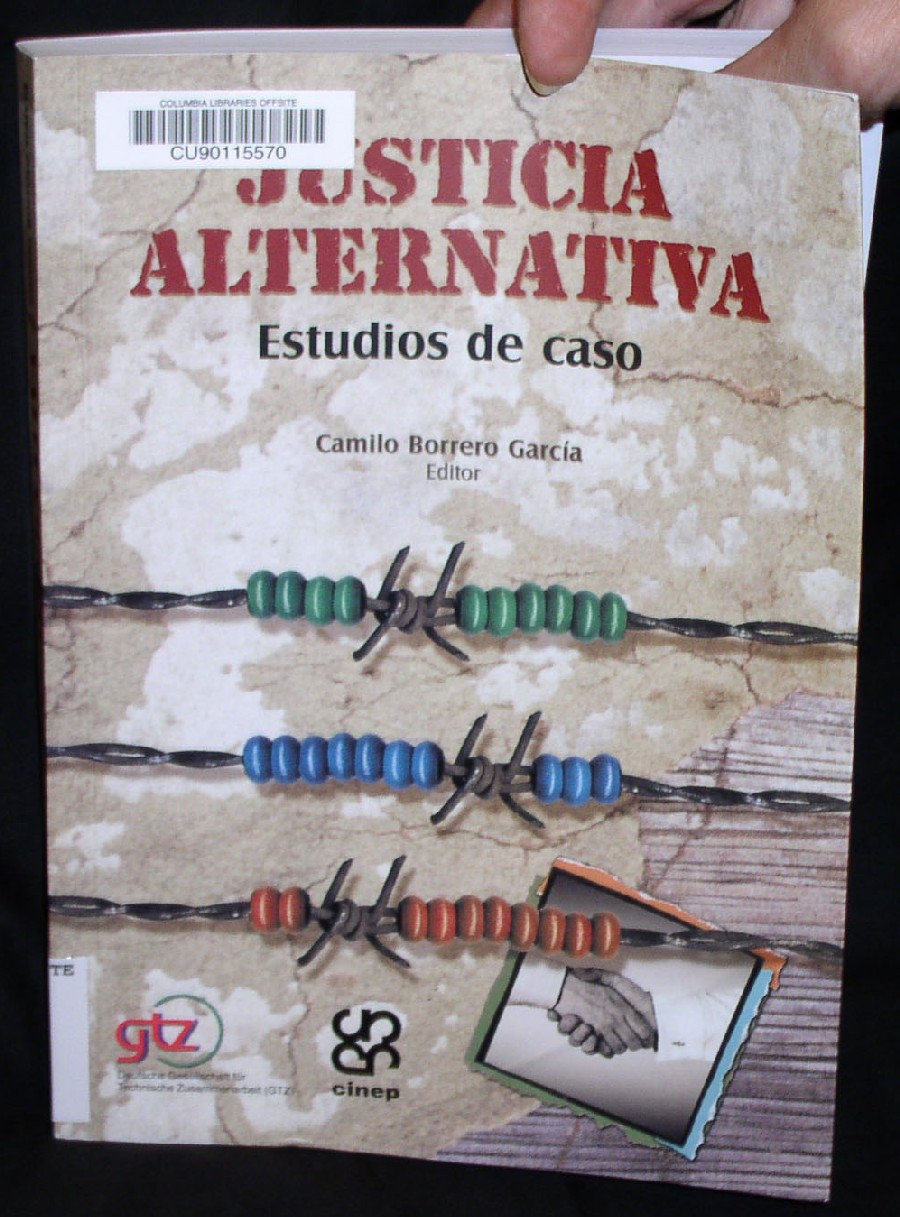 |
Correct for ReCAP, even if it covers text. |
Books in preservation boxes being sent to Offsite need duplicate Offsite barcodes. The duplicate barcode (i.e., the barcode that reads "Duplicate" at the top) is attached to the book as instructed above, i.e. 1/4 of inch from the top edge and spine of the front cover, and the original barcode (i.e., the barcode that reads "Columbia Libraries Offsite" at the top) is placed on the upper left-hand corner of the front flap of the box. (Note that, in addition to the usual place on the title page verso, the call number should also be written on the inside front flap of the box to reduce potentially harmful excessive handling of the book in the Binding and Shelf Processing Unit [BSP] when it is being labeled.) For example:
Like this: |
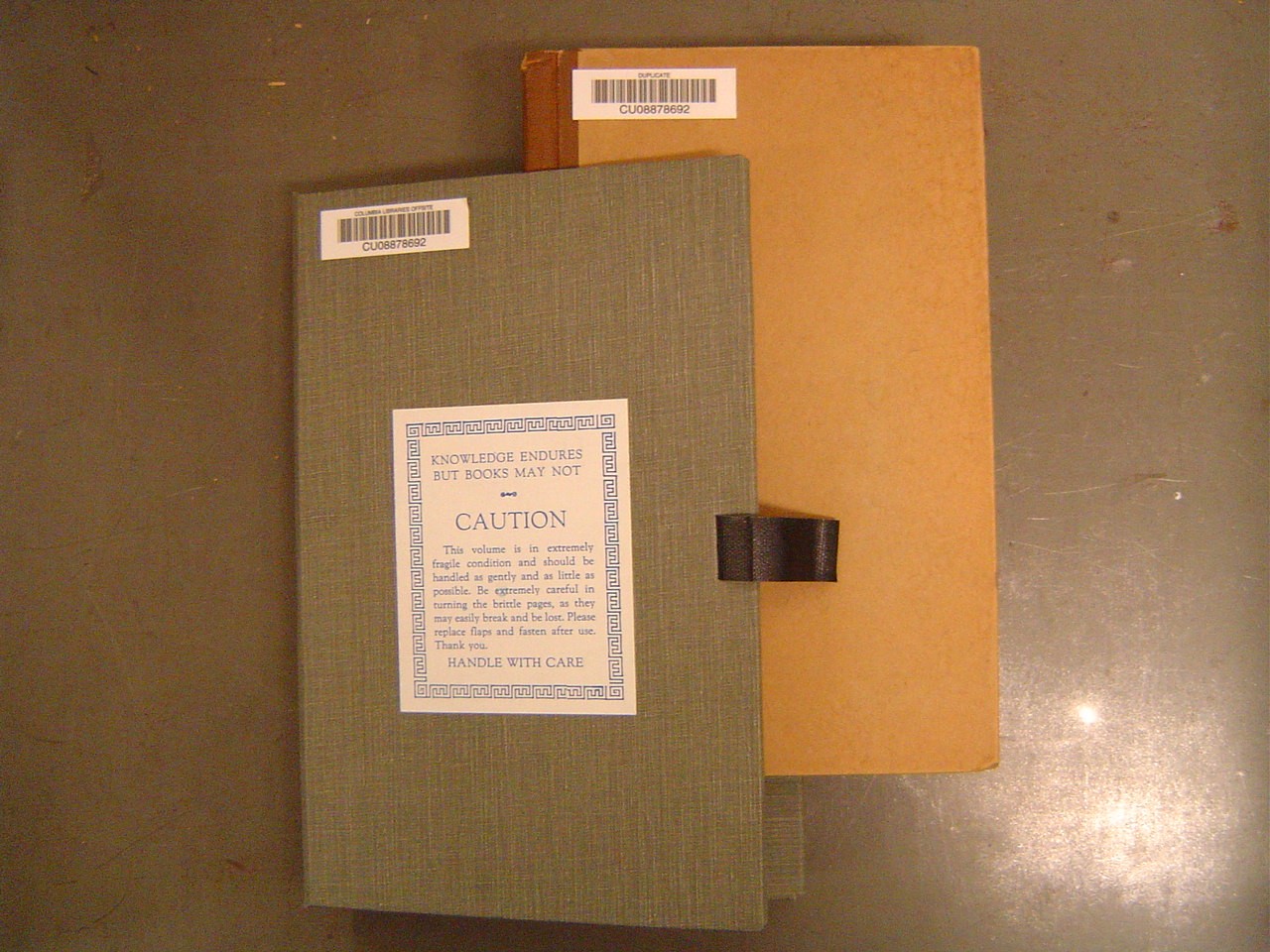 |
Return to CPM Table of Contents